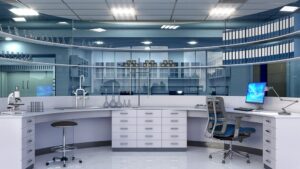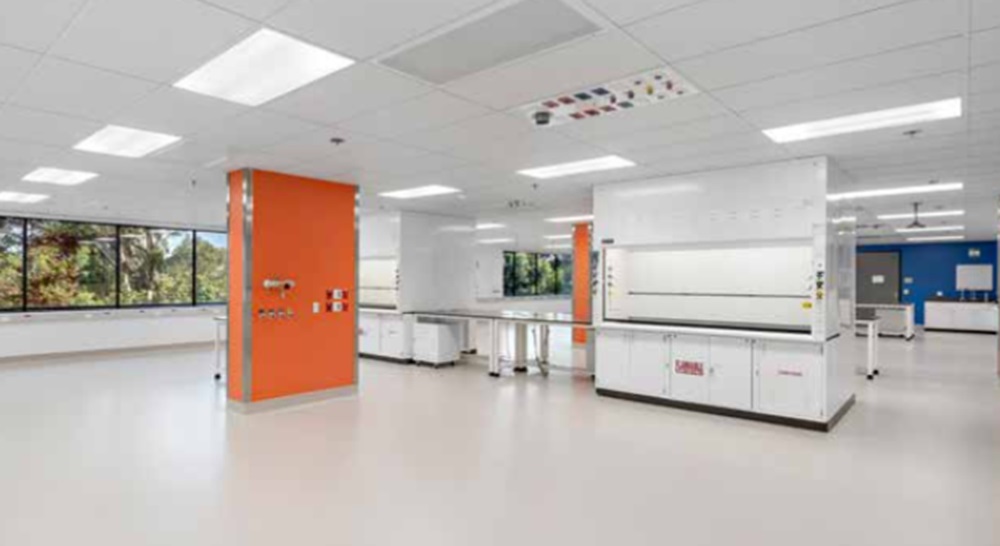
As laboratories continue to evolve, so do the demands placed on their furniture and equipment. Modern labs require solutions that meet rigorous safety and performance standards and align with goals for sustainability, adaptability, and user comfort. At the heart of these advancements lies a focus on innovative materials that enhance durability, functionality, and efficiency.
In 2024, the spotlight is on cutting-edge materials shaping the future of lab furniture and equipment, from powder-coated steel to anti-microbial surfaces. Ergonomics is also taking center stage, ensuring laboratory professionals can work comfortably and safely in demanding environments.
Genie Scientific, a leader in lab furniture design, is at the forefront of these developments, offering state-of-the-art solutions, including their renowned fume hoods and modular furniture systems.
This article explores the latest innovations in lab furniture materials and what they mean for the laboratories of tomorrow. Whether you’re looking to upgrade your workspace or stay ahead of industry trends, these advancements promise to transform how laboratories function in the years to come.
The Drive for Innovation in Lab Materials
The rapid evolution of scientific research and development demands laboratory environments that are more versatile, sustainable, and efficient than ever before. Material innovations in lab furniture are driven by a convergence of factors, including advancements in technology, the growing emphasis on safety and ergonomics, and a shift toward environmentally conscious design.
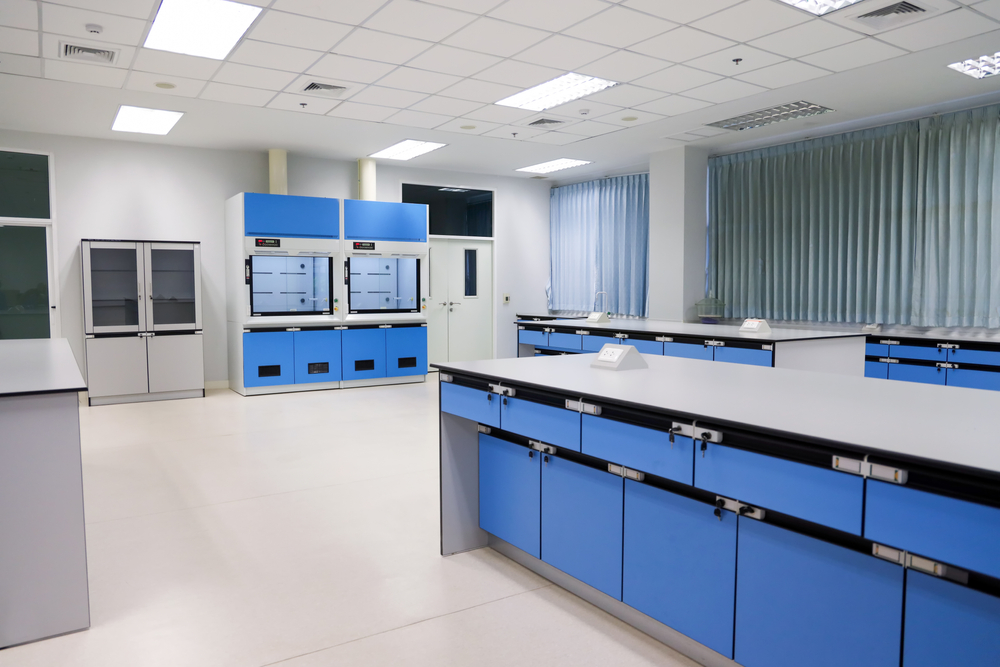
Meeting Modern Laboratory Demands
Today’s laboratories are no longer static; they require adaptable furniture and equipment that can keep up with changing workflows and dynamic research needs. Traditional materials often fall short in providing the flexibility, durability, and chemical resistance required in modern labs.
This has spurred the adoption of high-performance materials that can endure harsh conditions while remaining lightweight and functional.
Sustainability and Green Initiatives
Environmental sustainability is a key driver of innovation. Labs worldwide are seeking materials with lower carbon footprints, such as recycled metals and bioplastics.
These materials not only reduce waste, but also align with initiatives like LEED certification, which promotes environmentally friendly building practices.
Prioritizing Safety and Ergonomics
Safety remains a cornerstone of lab design, and materials play a critical role in minimizing risks. Anti-microbial and chemical-resistant surfaces, for instance, help reduce contamination and withstand exposure to harsh substances.
Alongside safety, ergonomics is emerging as a priority. Material choices, such as lightweight composites and smooth, low-friction finishes, enable the creation of furniture designed to reduce strain and enhance user comfort during long hours in the lab.
The Role of Technology
Advances in material science have introduced smart materials capable of responding to environmental changes, such as self-healing surfaces and UV-resistant coatings.
These innovations improve performance and extend the lifespan of lab furniture, ensuring that investments in laboratory infrastructure yield long-term value.
By embracing these trends, laboratories can create workspaces that not only support cutting-edge research but also foster safer, more sustainable, and user-friendly environments.
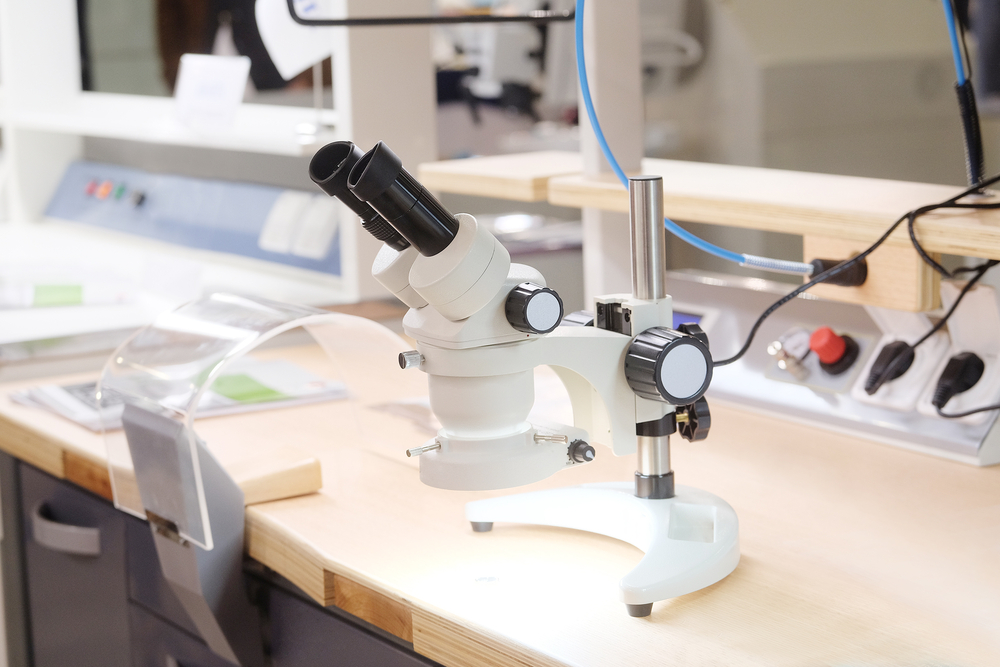
Key Innovations in Lab Furniture Materials for 2024
The lab furniture industry is entering a transformative phase, with innovations in materials driving improvements in durability, safety, sustainability, and ergonomics. Here are the standout material advancements shaping lab furniture in 2024.
1. Sustainable Materials
As environmental concerns take center stage, laboratories are adopting eco-friendly materials that minimize environmental impact. Recycled metals and bioplastics are gaining traction as sustainable alternatives to traditional materials. These options reduce waste while maintaining the strength and chemical resistance essential for lab environments.
Sustainability extends beyond the materials themselves to include greener manufacturing processes, helping laboratories align with initiatives like LEED certification and achieve their environmental goals.
2. Powder-Coated Steel
Powder-coated steel remains a cornerstone of modern lab furniture due to its unmatched durability, corrosion resistance, and ease of cleaning. Advances in powder-coating techniques have introduced finishes that are not only more resilient to chemicals and abrasions but also aesthetically pleasing, available in a broader range of colors and textures.
This material is especially valued for its long lifespan, low maintenance requirements, and ability to withstand the rigors of demanding laboratory environments, making it a favorite for modular lab furniture designs.
3. Anti-Microbial and Chemical-Resistant Surfaces
Health and safety are critical in laboratory settings, and materials with anti-microbial properties are becoming standard in workbenches, countertops, and other high-contact areas. These surfaces help reduce the spread of contaminants, ensuring a cleaner and safer workspace.
Chemical-resistant surfaces are equally important, offering protection against spills and exposure to harsh substances that could degrade traditional materials. This combination of durability and hygiene is essential for maintaining lab integrity.
4. Ergonomics in Lab Furniture
The integration of ergonomics into lab furniture design is more evident than ever in 2024. Materials are being chosen not just for strength, but also for their ability to enhance user comfort. Lightweight composites are making lab furniture easier to adjust and move, while smooth, low-friction finishes reduce strain during frequent use.
Adjustable workstations, soft-touch surfaces, and temperature-responsive materials are being incorporated to ensure lab personnel can work comfortably and efficiently, even during extended periods.
5. Smart and Adaptable Materials
Emerging smart materials are revolutionizing lab furniture with their ability to adapt to environmental conditions. Self-healing surfaces that repair minor scratches or cracks and UV-resistant coatings that protect furniture exposed to natural light are just a few examples of how technology is being integrated into material design.
These advancements enhance the longevity and functionality of lab furniture, ensuring it meets the evolving demands of modern laboratories while minimizing the need for replacements or repairs.
By leveraging these innovative materials, laboratories can create spaces that are not only high-performing but also sustainable, safe, and tailored to the needs of their users. Genie Scientific remains at the forefront of incorporating these advancements into its lab furniture offerings, setting the standard for quality and innovation.
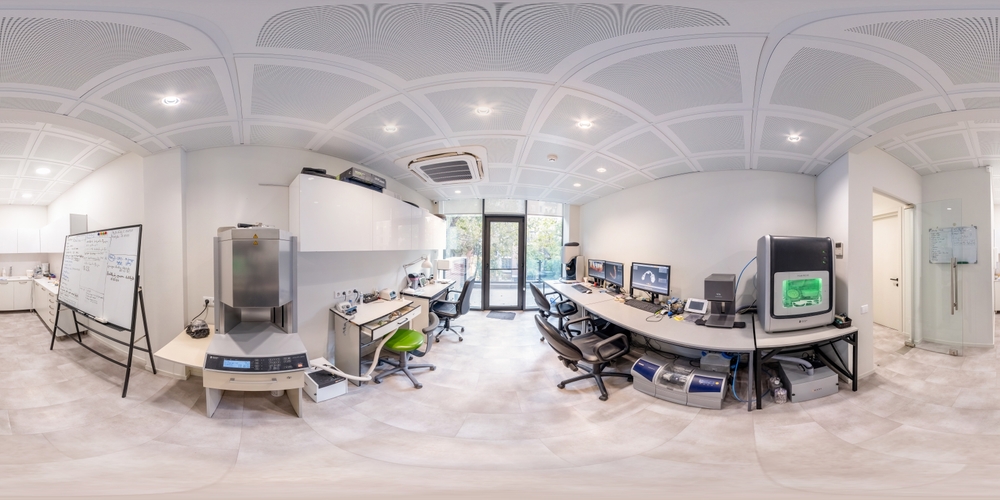
Advantages of These Innovations
The adoption of cutting-edge materials in lab furniture is reshaping laboratory environments, offering numerous advantages that cater to modern demands for safety, sustainability, and efficiency. Here are the key benefits of these material innovations:
1. Enhanced Safety
Materials like anti-microbial surfaces and chemical-resistant coatings significantly reduce risks in the laboratory. By minimizing contamination and protecting against spills or chemical exposure, these materials create safer workspaces for lab personnel.
Smart materials that respond to environmental changes, such as temperature-sensitive or self-healing surfaces, further enhance safety by maintaining optimal conditions and preventing material degradation over time.
2. Greater Durability and Longevity
Advanced materials like powder-coated steel and high-strength composites offer exceptional durability, standing up to heavy use and harsh conditions. This longevity reduces the need for frequent replacements and lowers long-term maintenance costs, making these materials a cost-effective choice.
3. Sustainability and Environmental Impact
Sustainable materials, including recycled metals and bioplastics, align with eco-conscious goals by reducing the environmental footprint of laboratory construction and operations. These innovations support green initiatives, such as LEED certification, and contribute to a more sustainable future without compromising performance.
Additional Reading: Eco-Friendly Laboratory Furniture: Sustainable Options for Modern Labs
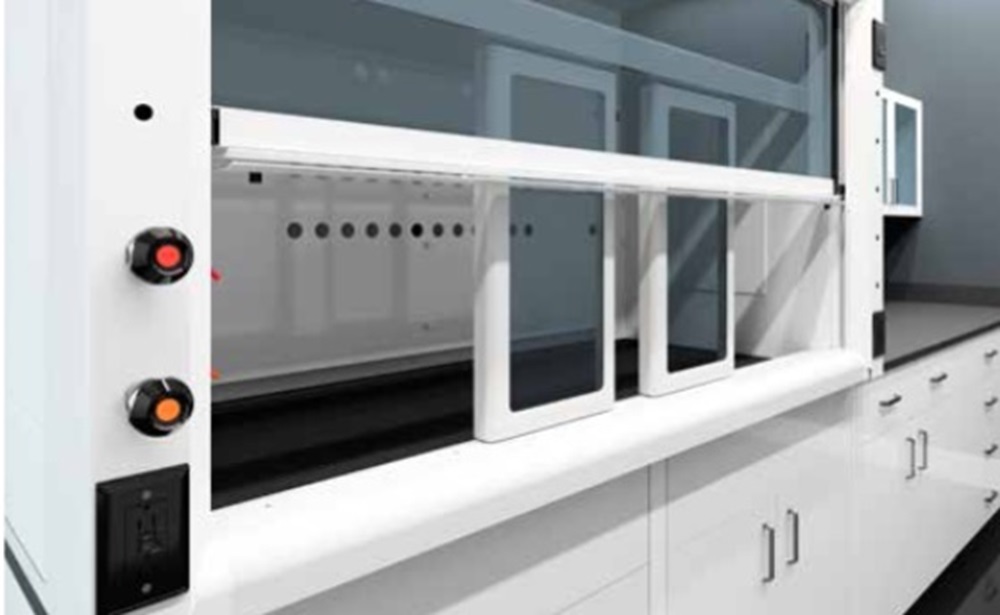
4. Improved Ergonomics
By integrating ergonomic principles into material selection and design, laboratory furniture is becoming more user-friendly. Lightweight, adjustable furniture pieces made from innovative composites reduce strain on users, promoting comfort and productivity during long hours of work.
Temperature-responsive materials and smooth finishes further enhance the usability of lab furniture, ensuring that every element is designed with the user’s well-being in mind.
5. Future-Proof Functionality
The introduction of smart materials ensures that lab furniture can adapt to evolving needs. Features like UV resistance and self-healing surfaces extend furniture lifespans, while modular designs supported by lightweight yet strong materials make reconfigurations easier as workflows change.
These advancements are transforming laboratory furniture into a cornerstone of efficiency, safety, and sustainability. By adopting these innovations, laboratories can create environments that are better equipped to support cutting-edge research and foster a safer, more productive atmosphere for personnel.
Genie Scientific’s commitment to incorporating these advancements ensures that their lab furniture remains at the forefront of industry innovation.
How Genie Scientific Leads the Way
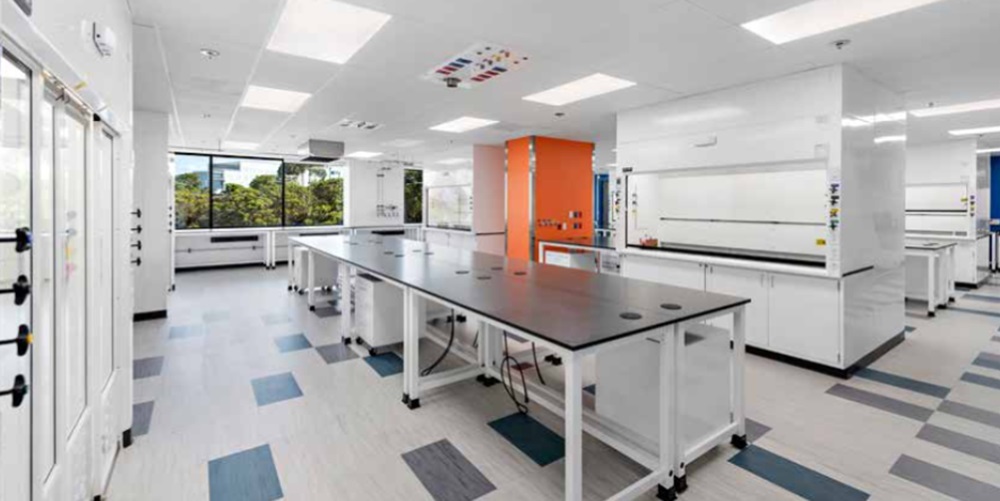
When it comes to innovation in laboratory furniture, Genie Scientific stands as a pioneer. With a commitment to excellence and a deep understanding of the unique needs of modern labs, Genie Scientific combines advanced materials, cutting-edge design, and unmatched expertise to deliver solutions that exceed expectations.
1. Expertise in Powder-Coated Lab Furniture
Genie Scientific has long been recognized for its expertise in crafting powder-coated lab furniture. This durable material offers exceptional resistance to corrosion and chemicals, making it ideal for the rigorous demands of laboratory environments.
Through continuous refinement of powder-coating techniques, Genie Scientific provides furniture that is not only functional but also visually appealing, with a range of finishes to suit any lab aesthetic.
2. Innovations in Fume Hood Design
Fume hoods are critical for laboratory safety, and Genie Scientific excels in designing units that incorporate the latest material advancements. From corrosion-resistant construction to smart airflow technologies, Genie’s fume hoods are engineered to maximize safety, efficiency, and durability.
Ergonomics also plays a central role in their designs, with features such as adjustable sash heights, improved visibility, and user-friendly controls, ensuring lab personnel can work comfortably and efficiently.
Additional Reading: The Evolution of Laboratory Fume Hoods: What’s New in 2024
3. Commitment to Sustainability
Sustainability is at the heart of Genie Scientific’s design philosophy. By utilizing eco-friendly materials like recycled metals and focusing on green manufacturing practices, the company supports laboratories in achieving their environmental goals.
4. Tailored Solutions for Every Lab
Recognizing that no two labs are the same, Genie Scientific offers customizable furniture and modular designs that can adapt to unique workflows. From selecting the most suitable materials to configuring layouts that optimize space and efficiency, Genie ensures every product meets the specific needs of its clients.
5. Leading Through Innovation
Genie Scientific consistently invests in research and development to stay ahead of industry trends. Whether it’s integrating smart materials like self-healing surfaces or pioneering ergonomic designs, the company is dedicated to creating furniture that supports cutting-edge research and fosters safer, more productive environments.
By prioritizing quality, safety, and innovation, Genie Scientific continues to lead the way in laboratory furniture design. Whether you require durable powder-coated furniture, advanced fume hoods, or sustainable solutions, Genie Scientific delivers products that redefine what’s possible in modern laboratories.
Additional Reading: Growth in Laboratory Design: Mobility, Sustainability, and a Reflection of How We Think

Looking Ahead
The future of laboratory furniture is poised to be shaped by groundbreaking advancements in materials, sustainability, and design. As the demands of scientific research evolve, so too must the tools and environments that support it. Here’s what to expect as we look beyond 2024:
1. Emerging Material Technologies
The development of next-generation materials, such as nanocomposites and bioengineered substances, promises to revolutionize lab furniture. These materials could offer unparalleled durability, self-cleaning capabilities, or enhanced resistance to extreme temperatures and chemicals, redefining the boundaries of performance.
Additionally, the integration of smart technologies into materials will continue to grow. Imagine furniture that can monitor and adjust its properties, such as humidity resistance or structural integrity, in real time to meet changing environmental conditions.
2. Increasing Focus on Sustainability
As the global emphasis on environmental responsibility intensifies, laboratories will adopt even more sustainable practices. This includes widespread use of renewable materials, cradle-to-cradle designs that facilitate recycling, and further reduction of energy consumption in manufacturing processes.
Furniture with modular designs will play a pivotal role in reducing waste by allowing labs to reconfigure and reuse components as their needs change, extending the lifecycle of their investments.
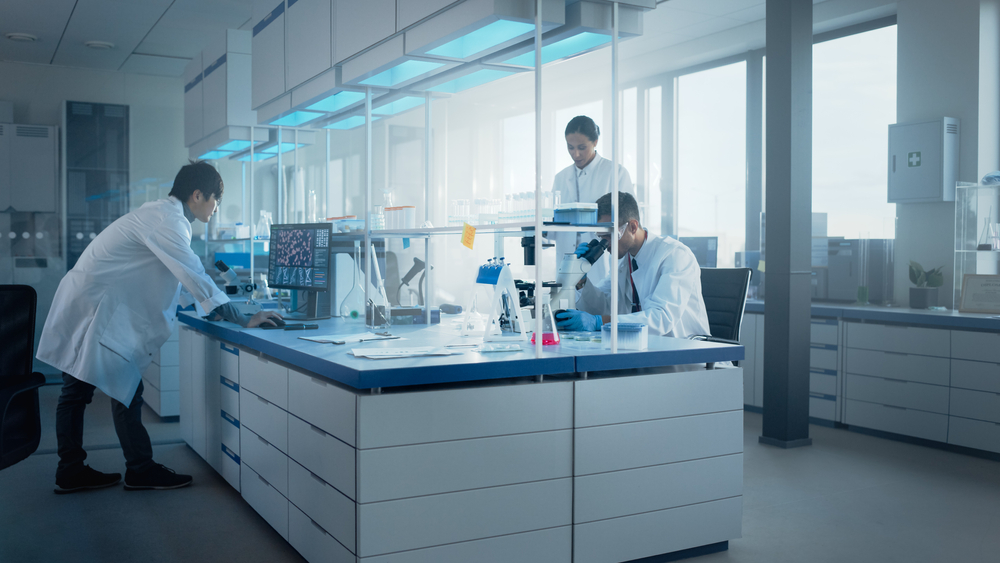
3. Enhanced Ergonomics and User-Centric Designs
The role of ergonomics in lab furniture will only grow, with innovations aimed at improving the health, comfort, and productivity of lab personnel. Future designs may incorporate adaptive technologies, such as furniture that adjusts automatically to the user’s physical abilities, posture, or workload.
Materials will also play a part, with softer surfaces, temperature-regulating finishes, and low-friction components enhancing the overall user experience.
4. The Role of Customization and Modularity
Customization will become even more accessible, as advancements in manufacturing technologies like 3D printing allow for bespoke furniture tailored to specific laboratory applications. Modular furniture designs will also continue to thrive, enabling labs to scale or modify layouts with minimal disruption.
5. Genie Scientific’s Vision for the Future
As an industry leader, Genie Scientific remains dedicated to anticipating and meeting the needs of tomorrow’s laboratories. Through ongoing research and development, Genie is committed to exploring innovative materials and sustainable practices while delivering furniture that prioritizes safety, functionality, and comfort.
By staying at the forefront of these trends, Genie Scientific is not just building furniture for today’s laboratories—it’s laying the foundation for the labs of the future.
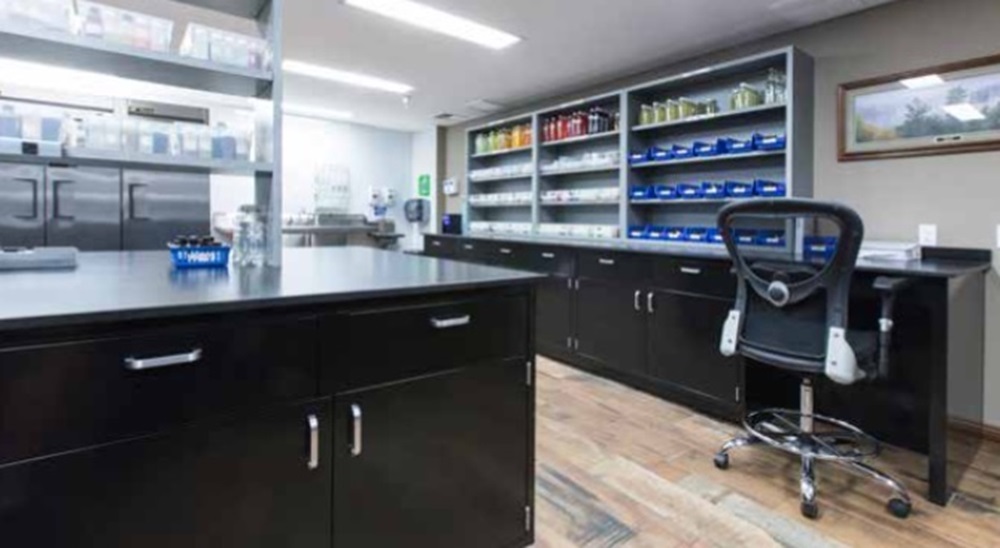
Conclusion
Innovation in laboratory furniture materials is not just about keeping pace with the demands of modern science—it’s about anticipating the needs of tomorrow’s researchers. From sustainable and anti-microbial surfaces to ergonomic and smart designs, the advancements shaping 2024 are setting new standards for safety, functionality, and efficiency in lab environments.
These innovations aren’t merely trends; they represent a commitment to creating workspaces that enhance productivity while promoting sustainability and user well-being. Laboratories adopting these cutting-edge solutions stand to benefit from improved durability, lower maintenance costs, and safer, more adaptable environments.
As a leader in the industry, Genie Scientific is at the forefront of these changes. With a proven track record in crafting durable powder-coated lab furniture, designing state-of-the-art fume hoods, and integrating sustainable and ergonomic features, Genie Scientific continues to set the benchmark for excellence.
The future of lab furniture is here, and Genie Scientific is ready to help you create a workspace that meets the challenges of today while preparing for the possibilities of tomorrow. Explore their innovative solutions and see how they can transform your laboratory into a hub of progress and efficiency.




